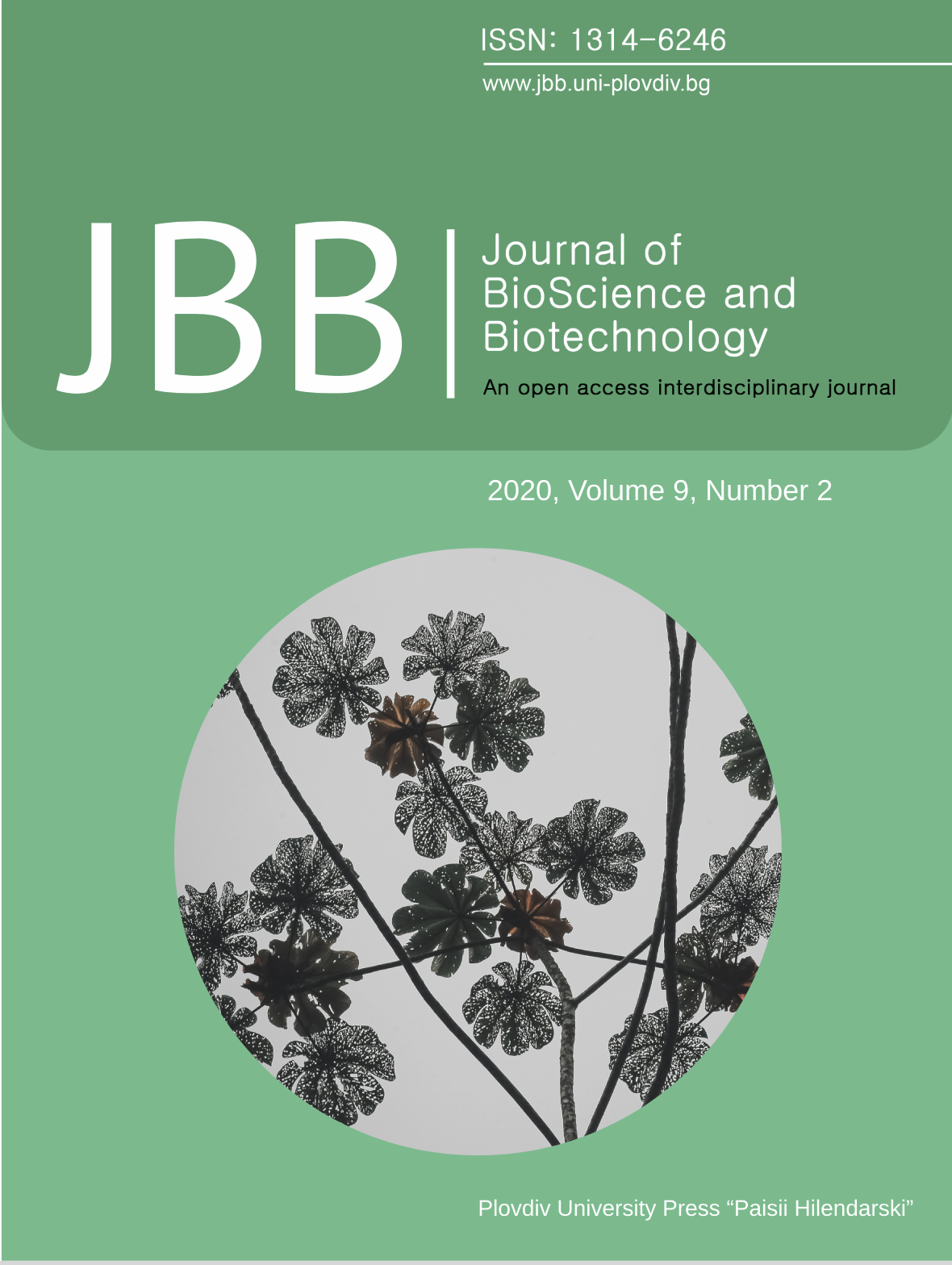Efficacy of some bioinsecticides against the Colorado potato beetle Leptinotarsa decemlineata (Say) (Coleoptera: Chrysomelidae) under laboratory conditions
Keywords:
bioinsecticides, Beauveria bassiana, Naturalis, Pyrethrum FS EC, NeemAzal T/C, Leptinotarsa decemlineataAbstract
The efficacy of three bioinsecticides: the microbial Naturalis (Beauveria bassiana), the botanical Pyrethrum FS EC (pyrethrin + sesame oil + soft potassium soap) and NeemAzal T/S (azadirachtin), allowed for application in organic farming in Bulgaria, against larvae and adults of the Colorado potato beetle, Leptinotarsa decemlineata (Say) (Coleoptera: Chrysomelidae) was studied under laboratory conditions. The best results from the tested products showed microbial insecticide Naturalis (Beauveria bassiana). At a concentration of 0.2%, the efficacy reached 78.4% and 68.4% on the 5-th day for larvae and adults, respectively, and 100% on the 7-th day after the treatment for both larvae and adults. The preparation showed very good action in its low concentration (0.1%) – efficacy was 88.5% and 68.5% on the 7-th day after the treatment for larvae and adults, respectively. Insecticides based on plant extracts showed very good results. The botanical insecticide Pyrethrum FS EC showed a fast initial action and good effectiveness. At a concentration of 0.1%, the efficacy reached 96.5% and 86.5% on the 5-th day for larvae and adults, respectively, and 100% on the 7-th day after the treatment for both. The botanical insecticide NeemAzal T/S at a concentration of 0.3% the efficacy was 81.8% and 63.7% for larvae and adults, respectively on the 7-th day after the treatment. At its low concentration of 0.1%, the NeemAzal T/S had insufficient effect and efficacy was only was 59.3% and 29.8% on the 7-th day after the treatment for larvae and adults, respectively.
Downloads
Published
How to Cite
Issue
Section
License
Authors of articles published in Journal of BioScience and Biotechnology retain the copyright of their articles. The journal/publisher is not responsible for subsequent uses of the work. It is the author's responsibility to bring an infringement action if so desired by the author.
- copyright, and other proprietary rights relating to the article, such as patent rights;
- the right to use the substance of the article in future own works, including lectures and books;
- the right to reproduce the article for own purposes, provided the copies are not offered for sale;
- the right to self-archive the article.


